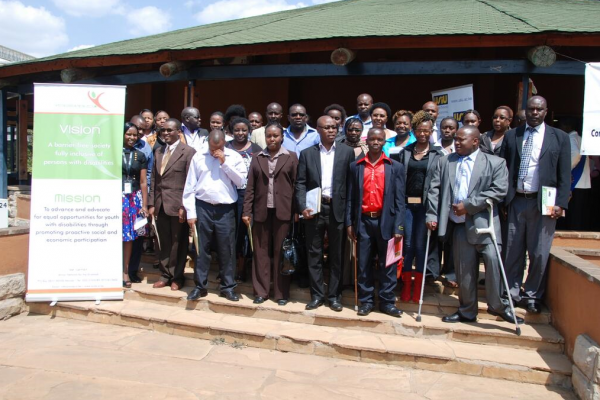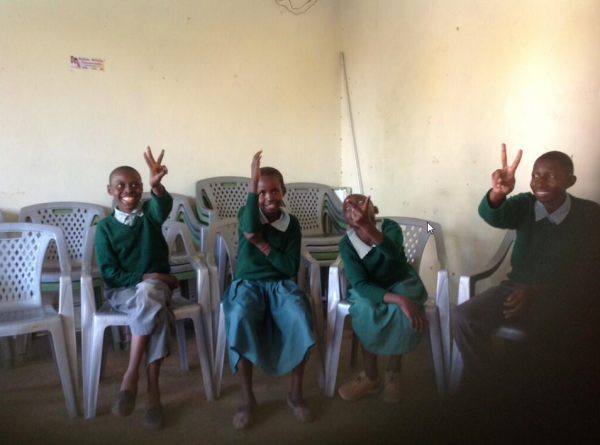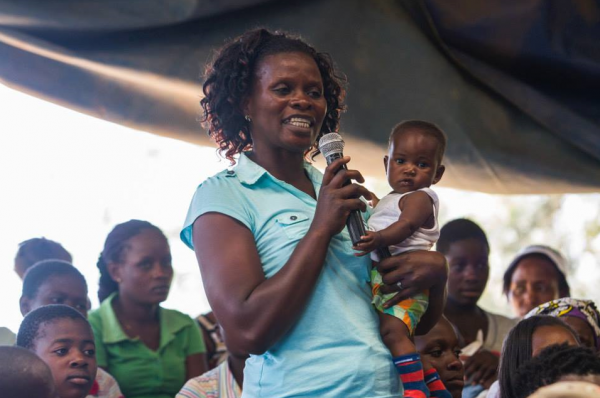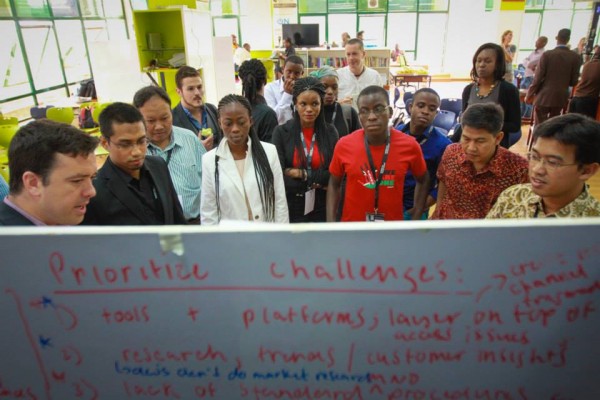In light of the upcoming Global Innovation Competition (GIC), past GIC mentor Fredrick Ouko shares his views on what it means to include ALL voices in new innovations aimed at greater citizen engagement and government responsiveness.
I was short-listed, but when I arrived for the job interview I could tell they were in shock. I hadn’t listed I had a disability on my CV, and while other applicants received a 15 minute interview, I was given two. The discrimination I felt was immense, and prompted me to think: if this was my experience, what were the other 15% of the population facing?
In 2003 I founded the Action Network for the Disabled which deals with issues of empowerment for people with disabilities in Kenya. Our main focus is on youth and employment, as when I was facing these challenges there was no community or platform that offered support.
We deal mostly with the transition from school to work, and preparing young people for the job market. Traditionally, the market hasn’t been very receptive to people with disabilities, but we’re working to change this. We often target HR managers to begin a conversation and it’s incredible how many myths and untruths we dispel about what it means to employ someone with a disability. It’s been rewarding finding employers who are open and receptive and continue to rely on our network for support and advice long after the hiring process.
If you’re talking about democracy – including ALL voices in the public sphere – it’s important to recognize the “public” are diverse, with different needs and experiences. When innovating towards this end, it’s therefore essential to examine the environment you’re dealing with. To ask: “what context am I deploying my innovation in? And what limitations or challenges do some members of the community face?”
Technology offers tremendous possibilities for empowering marginalized people. We’ve seen ICT bring work closer to people with disabilities by allowing them to work remotely from their computer or ipad. ICT can empower people by enabling them to earn a livelihood, and connect them with the social sphere.
While technology is not the solution, it can make processes more efficient, open and participatory. Innovations don’t need to be high-tech; they can just modify or merge existing ideas. I believe the most important aspects to consider when designing a solution are:
- why are you innovating?
- who are you innovating for?
Participating in last year’s Global Innovation Competition as a finalist mentor was rewarding. Some solutions, notably the winning idea from Pakistan, had already thought about including a disability rights perspective, while for others this perspective was new. As stated by Veronika Divisova of project, Taking Citizen Desk to Level 2.0:
Coming from a strongly tech-oriented organisation, I felt compelled by some of the sessions to ensure greater social impact of the project, for example in the area of gender or disability.
My vision for this year’s Global Innovation Competition is that entrants, from the outset, design solutions that truly aim to make services or decision-making processes accessible and open to everyone. That is, for all members of society including marginalized persons or people that for some reason remain “hard to reach.”
Below, a video summary of the Global Innovation Week which occured in Kenya last year:
About the author
Fredrick Ouko is a Global Innovation Competition mentorRelated content
-
BLOG | October 29, 2014
The Global Innovation Competition – keeping the good ideas in -
BLOG | May 4, 2015
Five things we learned at the Global Innovation Competition 2015 -
EVENT | January 21, 2016
The Global Innovation Competition 2016 -
NEWS | January 27, 2015
GIC: Announcing 30 Innovations to Make All Voices Count



